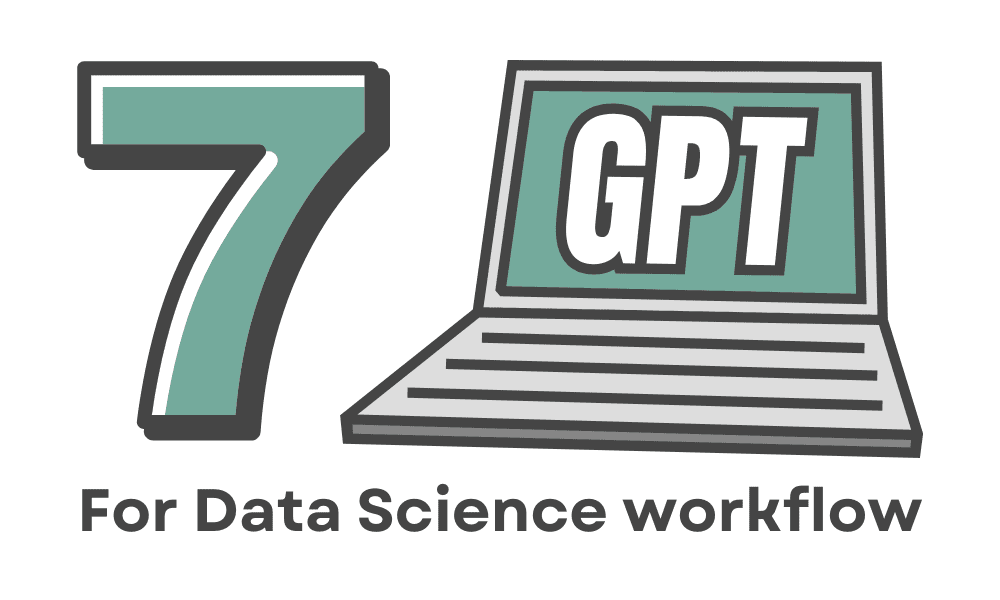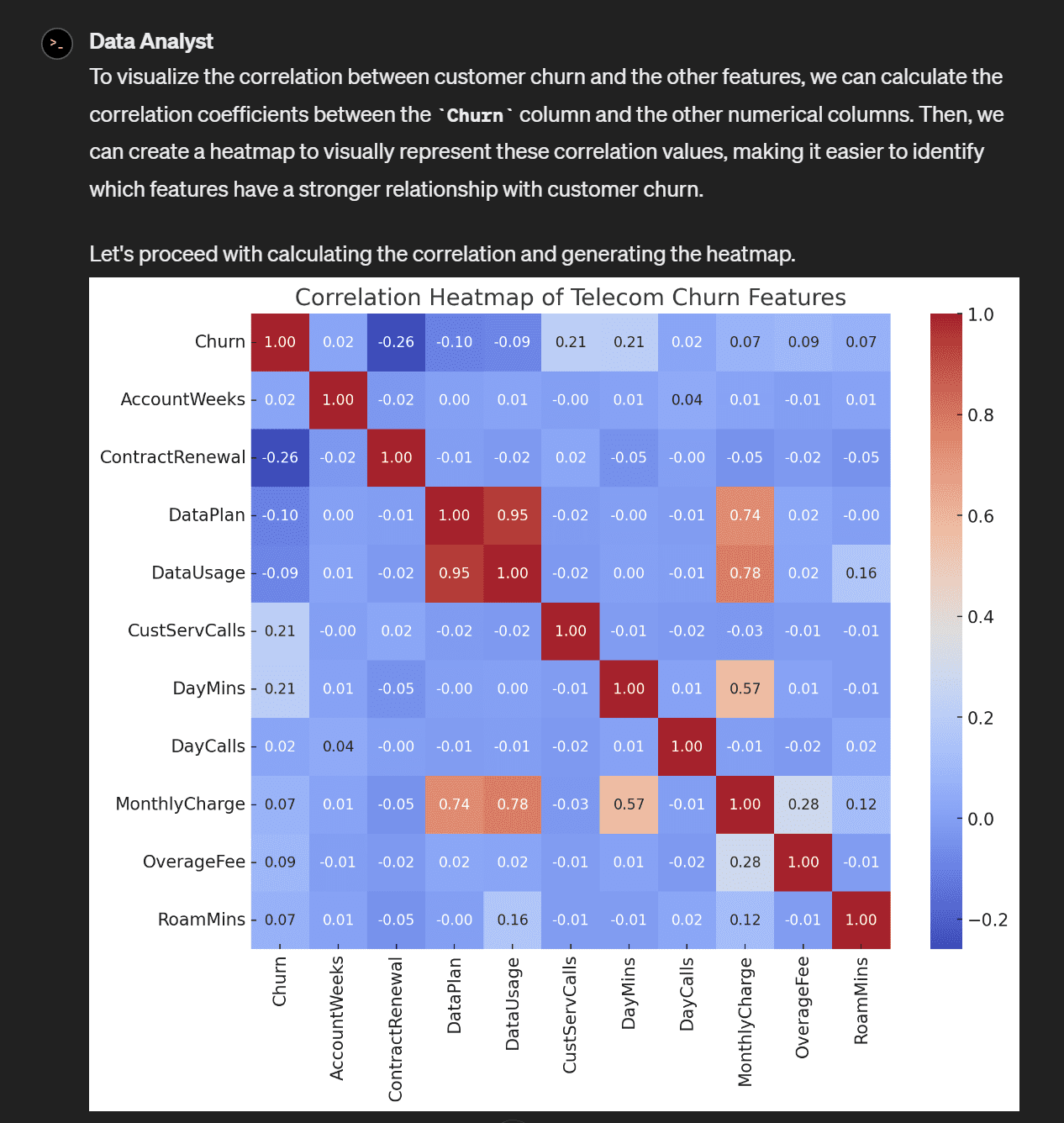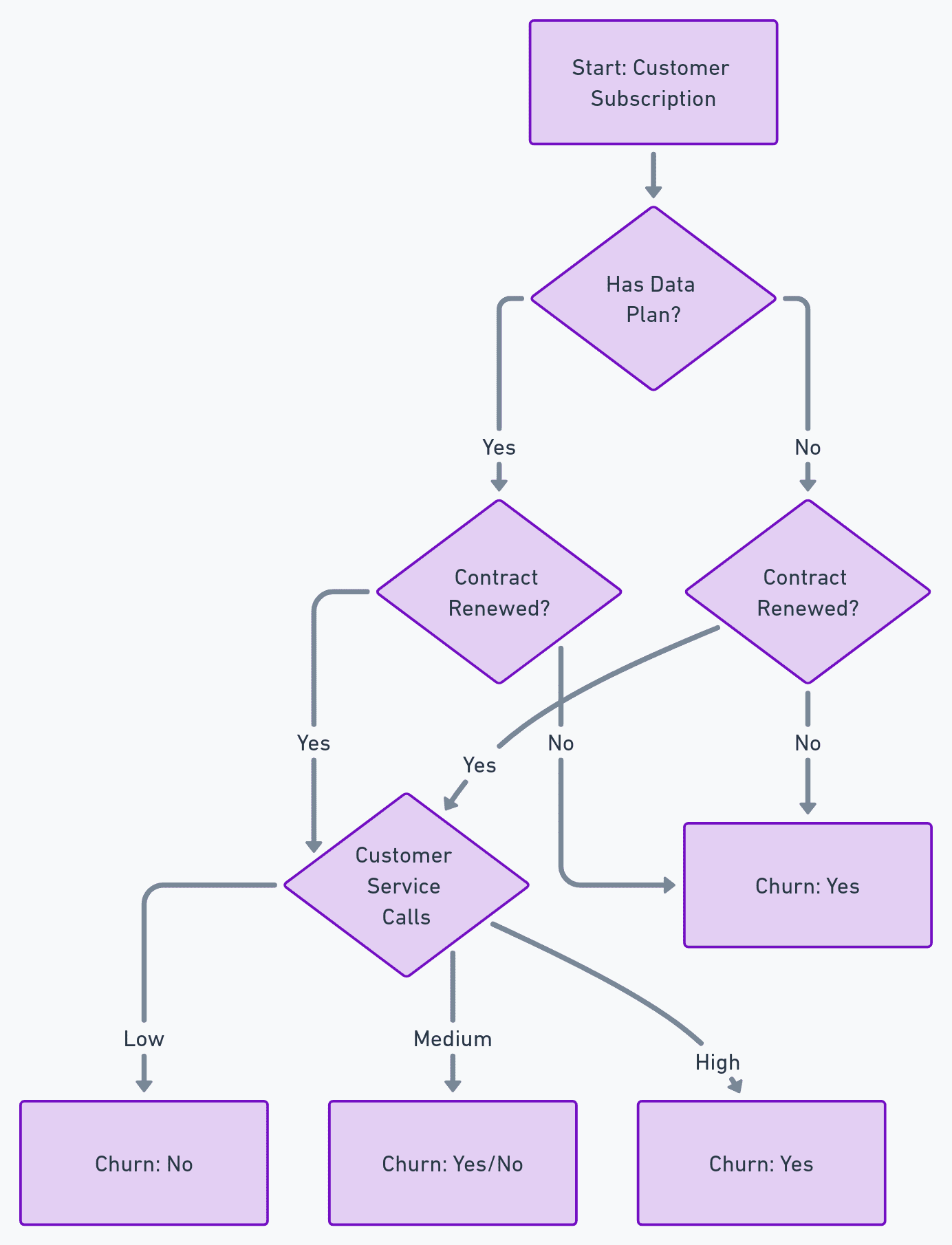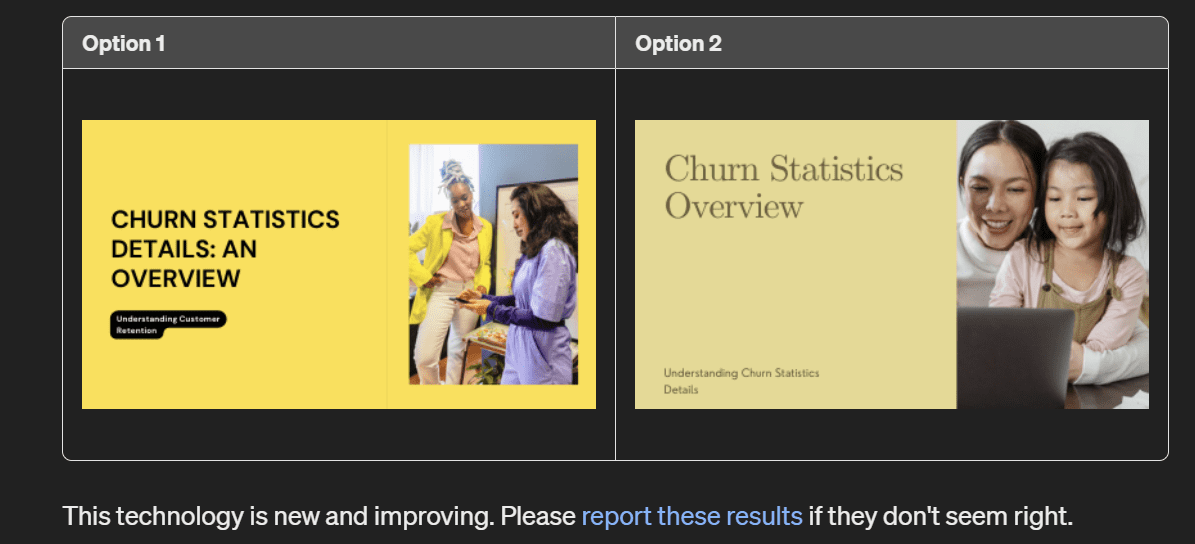
Image by Editor
ChatGPT has become the OpenAI product that changes how the world works. Many of the readers here are already using them or at least testing them out. The way it helps us, I don’t think we can return to our old way of working.
One of the innovations OpenAI provides is the GPT Store, where people can develop their custom GPT models and share them with the public. More than 3 million ChatGPT custom GPTs from the builders are open. Indeed, some of it could be useful to improve data scientist activity.
This article will discuss 7 GPTs from the GPT Store that could improve your Data Science workflow. What are these GPTs? Let’s get into it.
As a side note, I would use the Telecom Churn dataset from Kaggle as an example dataset for GPTs to use.
1. Data Analyst by ChatGPT
Let’s start with what ChatGPT teams have created for us, the Data Analyst. This is the Custom GPT, trained explicitly to analyze our data and visualize them as we need. By dropping the file, such as CSV files, and providing the prompt to what we need, the Data Analyst GPT could do the job automatically.
For example, I ask the Data Analyst to develop a Churn correlation analysis from the dataset I give them.

Data Analyst performs correlation analysis (Image by Author)
You can ask for further analysis from the Data Analyst GPT. You can also use the GPT to provide the whole code to execute yourself if necessary.
2. Machine Learning by Maryam Eskandari
The next GPT we will discuss is the Machine Learning GPT. This Custom GPT is designed as an assistant for any machine learning and data science activity. The usefulness includes discussing, learning, and developing suitable algorithms for our data projects.
As an example, I ask the Machine Learning GPT to perform model development from our example dataset to predict Churn. Here is the result.

Machine Learning performs Model experiments (Image by Author)
The GPT can provide a great comparison between the models they used. If we continue, we can ask the model to iterate with more models, perform hyperparameter tuning, and ask the GPT to provide the reasons for each action.
3. Machine Learning Engineer by Hustle Playground
Similar to the previous entry, the Machine Learning Engineer GPT provides the users with an assistant to develop the machine learning model. You can put your dataset and ask the GPT to give you the essential steps and the complete code.
What makes the Machine Learning Engineer different is that their GPT specifies the design of models for automating complex tasks, especially for deploying models. The GPT is good for you to discuss how you want to structure your model and how the model deployment in production should be.
4. AutoExpert (Dev) By llmimagineers.com
Speaking of model structuring, GPT is also suitable for helping us structure our code for machine learning modeling. One of the best coding assistants I have found is the AutoExpert. It’s a GPT that is designed to help you as a steadfast pair programmer assistant.
The GPT is developed with additional code generation ability, online access to the latest APIs, and custom commands to save your session state, which you can use for the later session if necessary.
Using this GPT, would help you generate the complex code for any purposes you need during data science activity. It also provides you with the code structure and the script to help you execute them better.
5. ScholarGPT by awesomegpts.ai
Let’s move on from the technical coding part and go for the theoretical one. As we know, data science works are about continuous learning, especially in novel use cases. With the growing research in data science, it’s sometimes hard to find the perfect research that could help our use cases. This is where ScholarGPT comes in.
This GPT would assist you in finding the latest research paper for our use cases. From the simple prompt, it would give us a selection of the latest papers that are related to the problem we want to solve.
For example, the text below is the result from ScholarGPT, where I uploaded our dataset, and I asked them to provide me with a research paper related to predicting churn.
Title: "Transparency in Decision-making: the Role of Explainable Ai (XAI) in Customer Churn Analysis"
- Authors: C ÖZKURT
- Year: 2024
- Summary: This study focuses on predicting lost customers and explaining the reasons behind it using machine learning, specifically scrutinizing customer churn in the telecommunications sector through rigorous analysis.
- Link: Read the paper?source?.
The ScholarGPT provides many more research papers for you to choose from, so you can select which applies to your use cases.
6. Whimsical Diagrams by whimsical.com
The next GPT we would discuss is the Whimsical Diagram. For many data science activities, it’s not always about researching and model development. There are many times that we need to visualize our workflow and provide an explanation of how our work would be. This is where Whimsical Diagrams GPT would help you.
This GPT is designed to explain and visualize concepts with flowcharts, mindmaps, and sequence diagrams. Providing the prompt and data source we have could help us deliver visualization that would help our work.
For example, I asked the model to provide me with a suggestion diagram from the Churn dataset, and it suggested visualizing the churn by the features. Below is the image result.

Churn by the features (Image generated by Whimsical Diagram GPT)
You can discuss further with the GPT to find your perfect diagram workflow for the data science works.
7. Canva by canva.com
The last one is the Canva GPT, which could help us assist in communicating our results. As we know, Canva is a service platform that helps design everything from logos to profile photos, banners, and presentations. With the Canva GPT, they can assist us in getting the best design for our analysis.
Data science is all about communicating our results to others, so it’s essential to have valid results that are presented in a way that the audience would understand. With Canva GPT, we can ask for suggestions on what design is suitable. For example, I asked the model to provide me with a design that is perfect for presenting the Churn Statistics.

Churn Statistic Design Selection (Canva GPT)
The GPT would give us the design options, and we could choose which we prefer or give additional prompts to get other designs.
Conclusion
This article discusses seven Custom GPTs available in the GPTs Store that could improve our data science workflow; they are:
- Data Analyst by ChatGPT
- Machine Learning by Maryam Eskandari
- Machine Learning Engineer by Hustle Playground
- AutoExpert (Dev) By llmimagineers.com
- ScholarGPT by awesomegpts.ai
- Whimsical Diagrams by whimsical.com
- Canva by canva.com
I hope it helps! Do you have any GPT suggestions that should be on this list? Give them in the comments as well.
Cornellius Yudha Wijaya is a data science assistant manager and data writer. While working full-time at Allianz Indonesia, he loves to share Python and data tips via social media and writing media. Cornellius writes on a variety of AI and machine learning topics.
